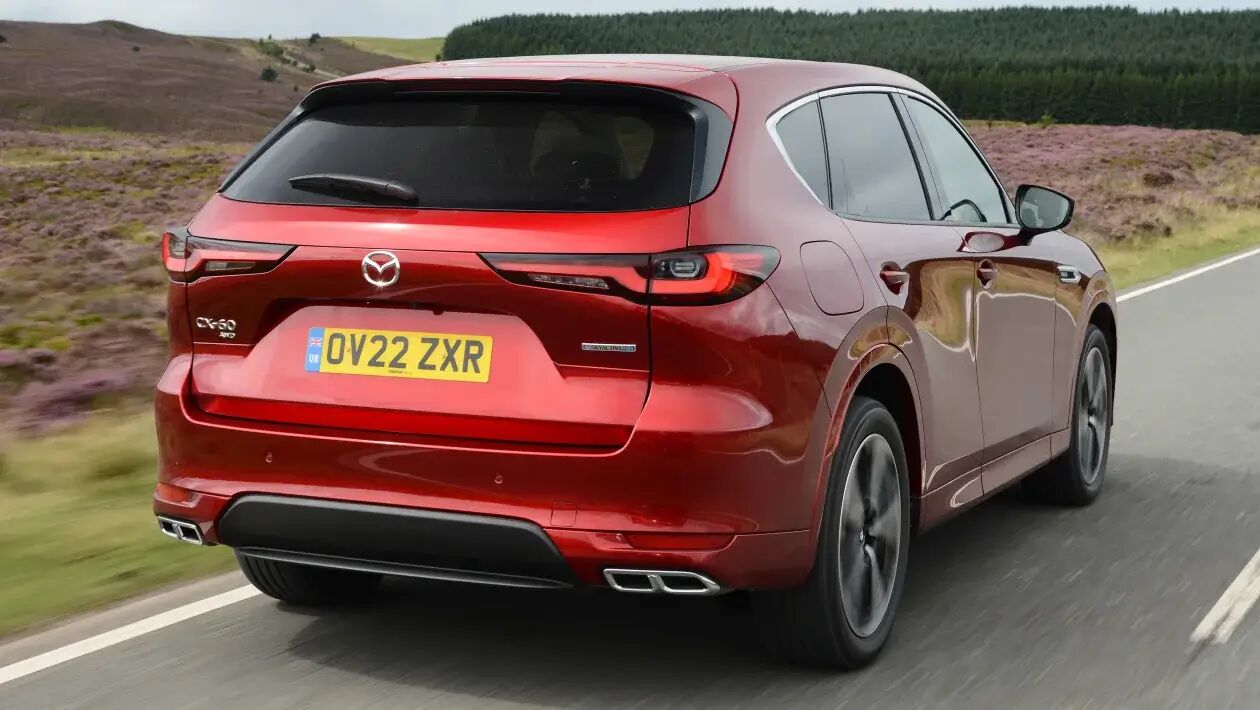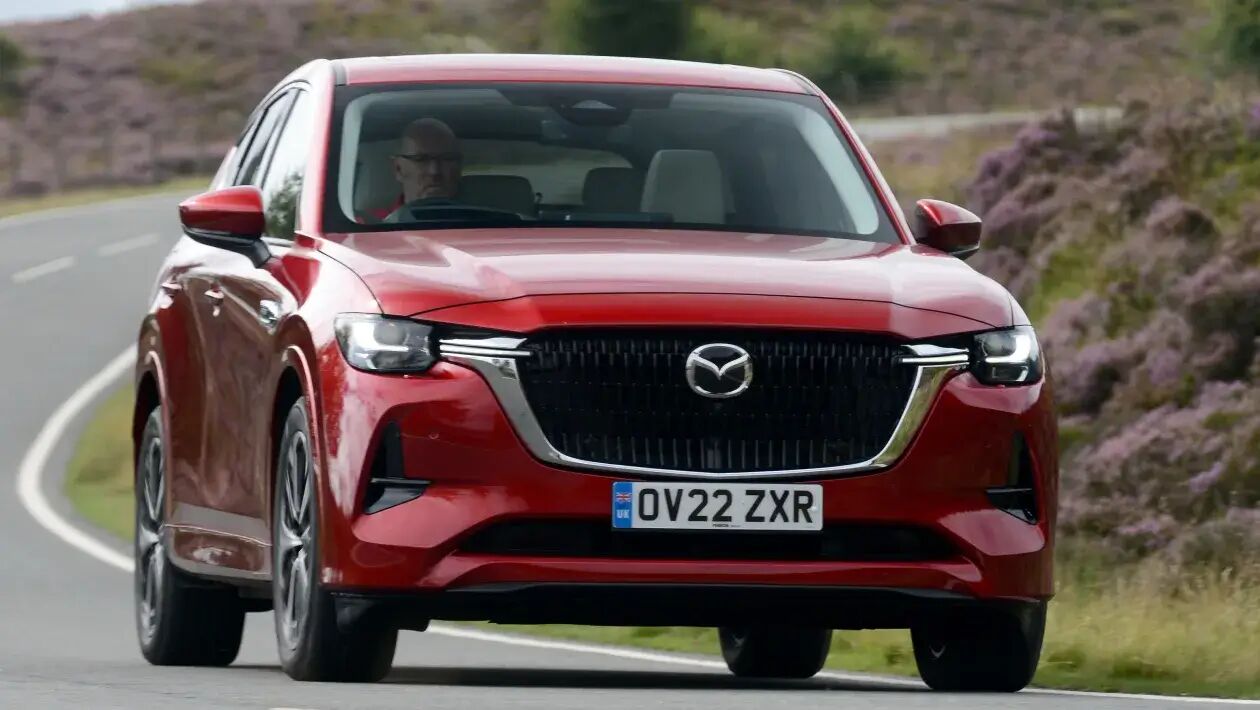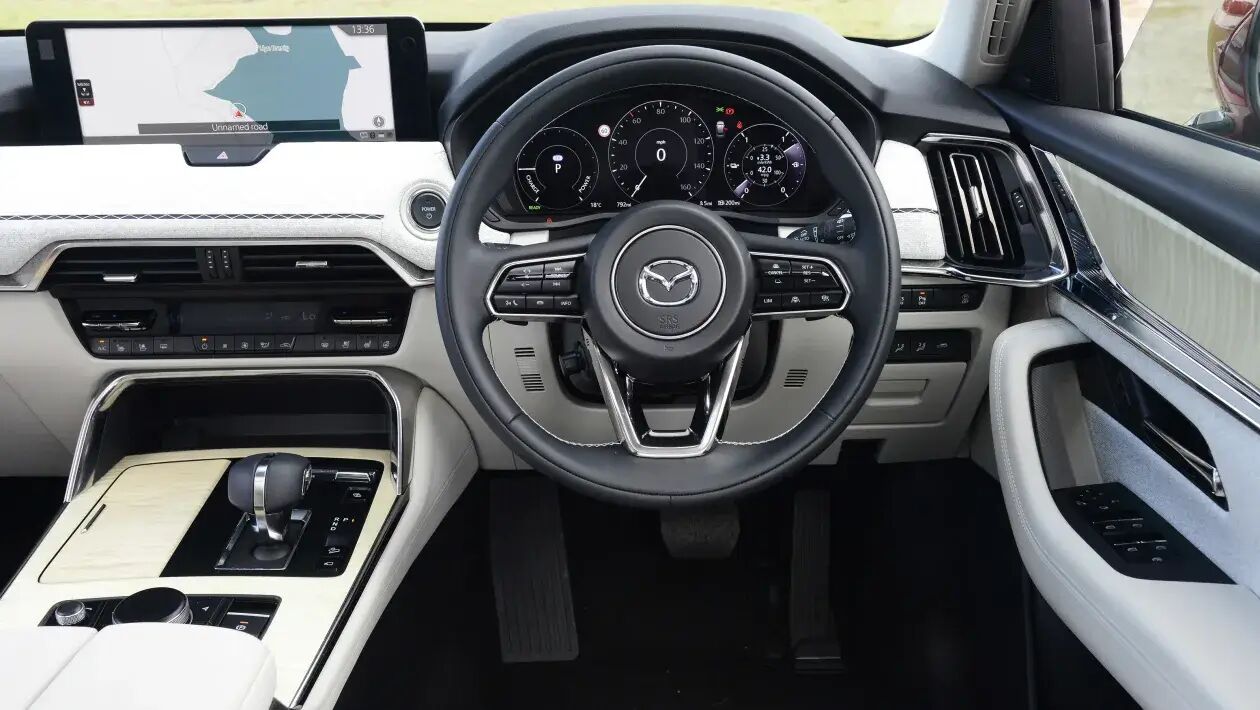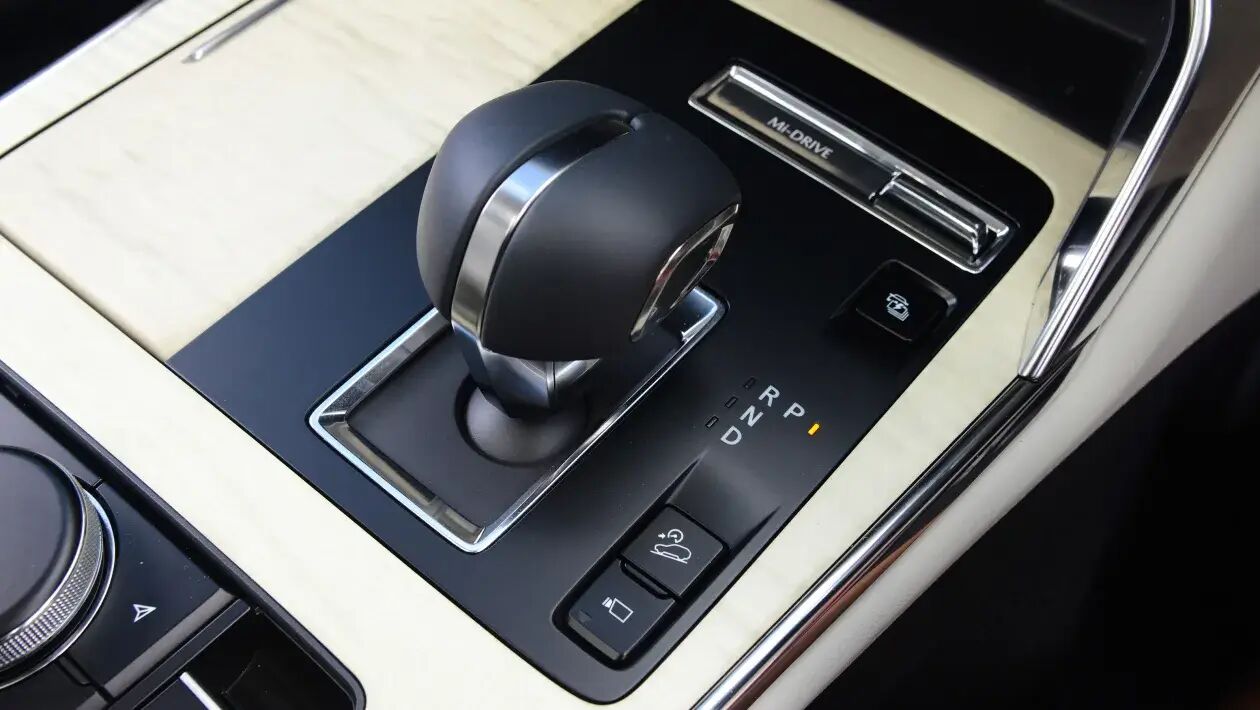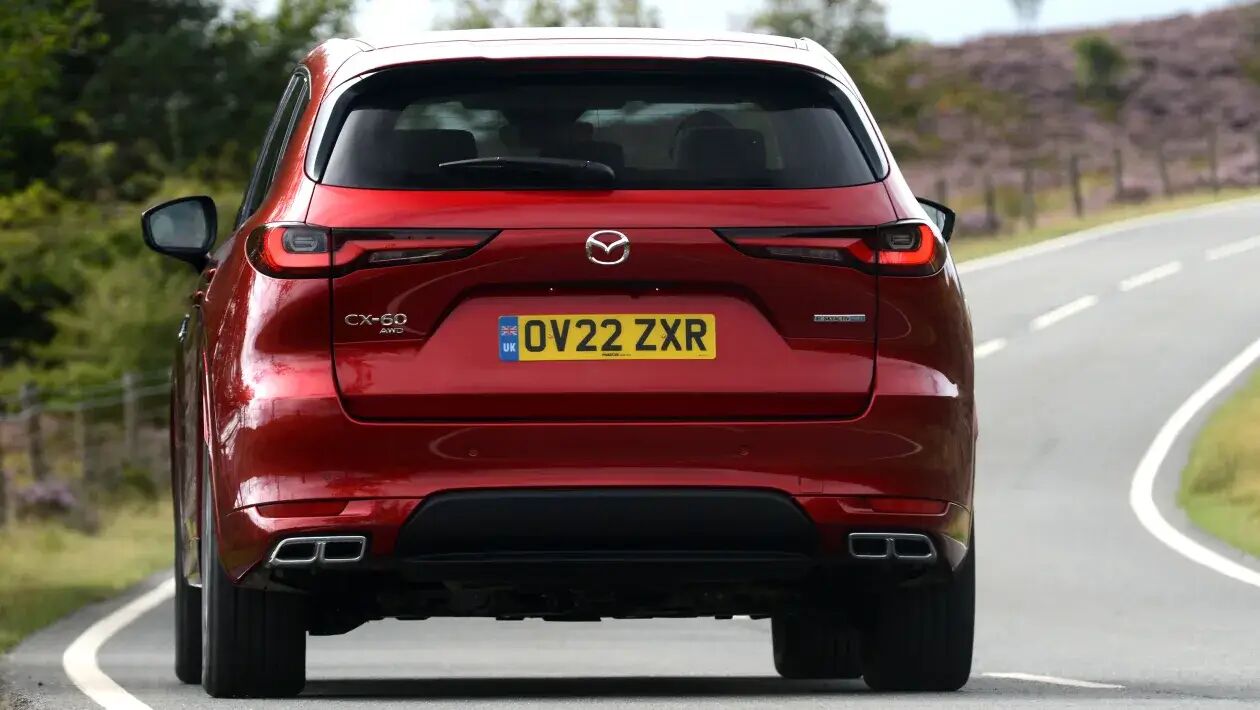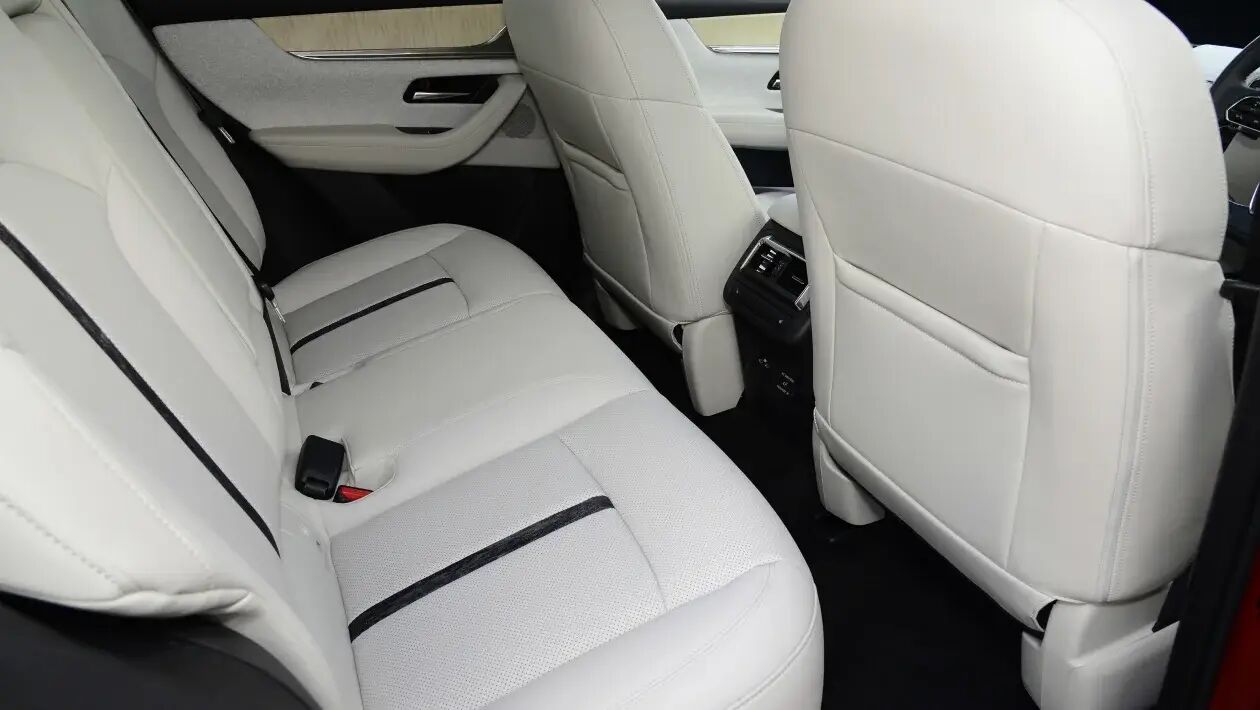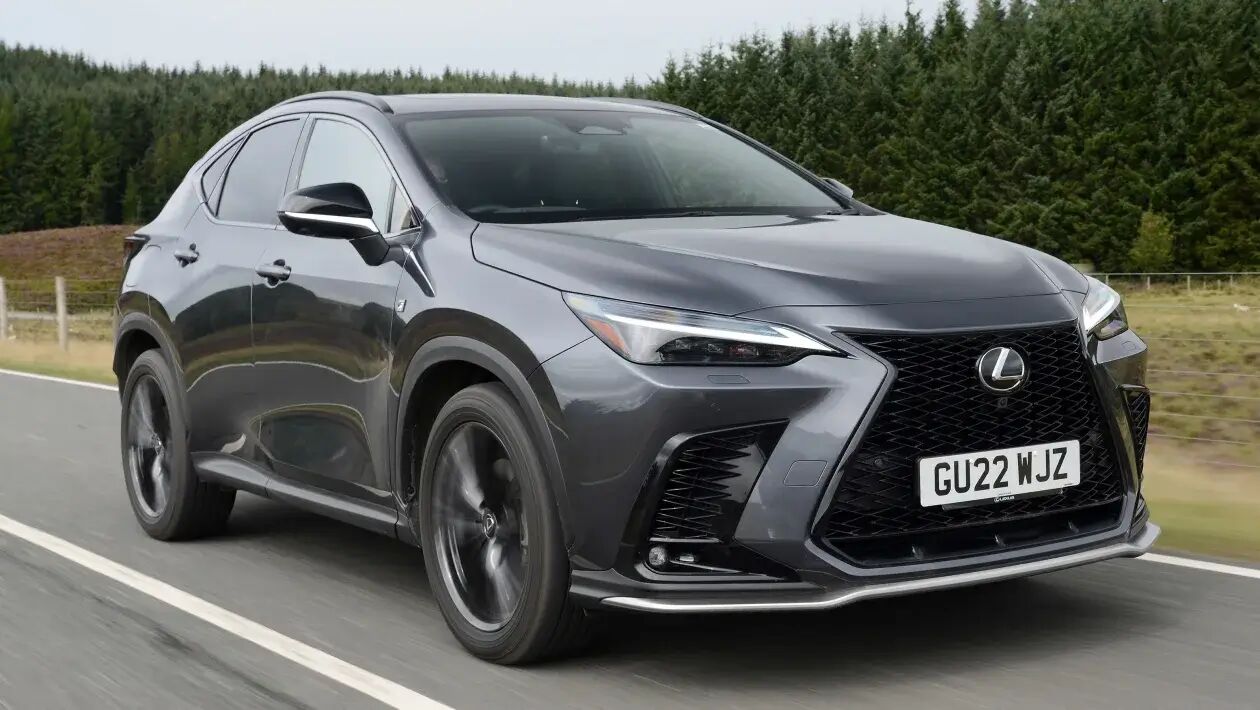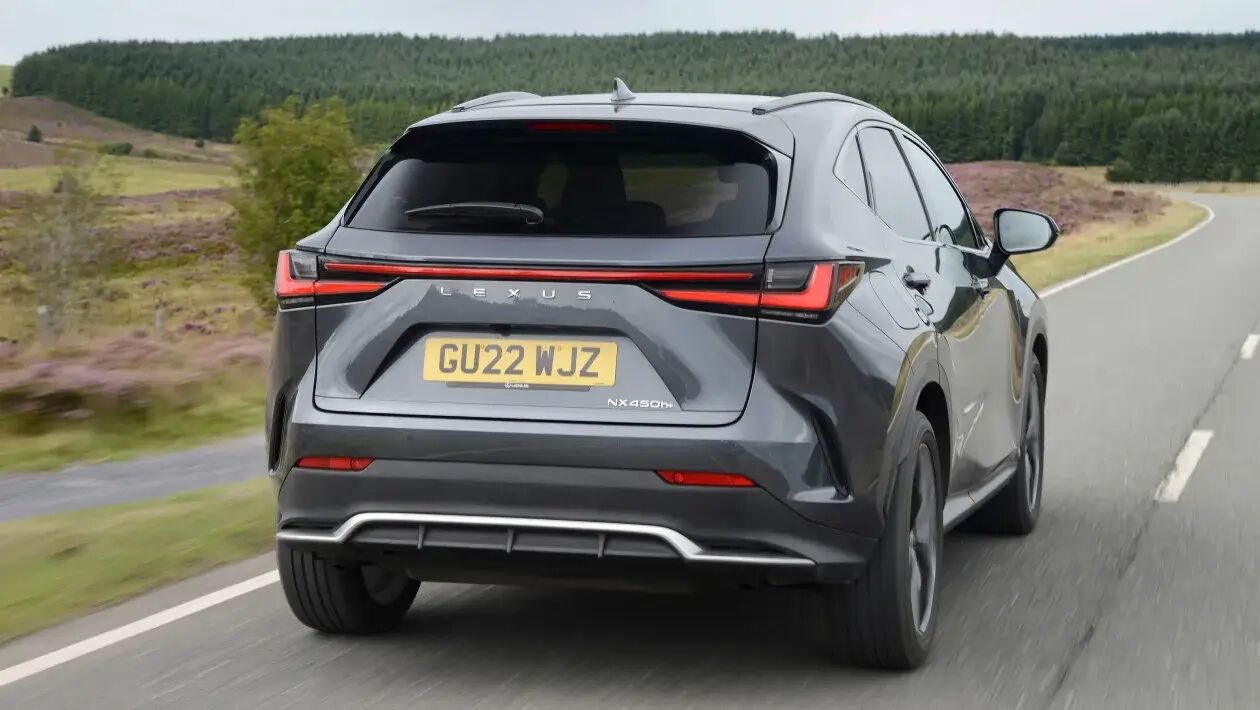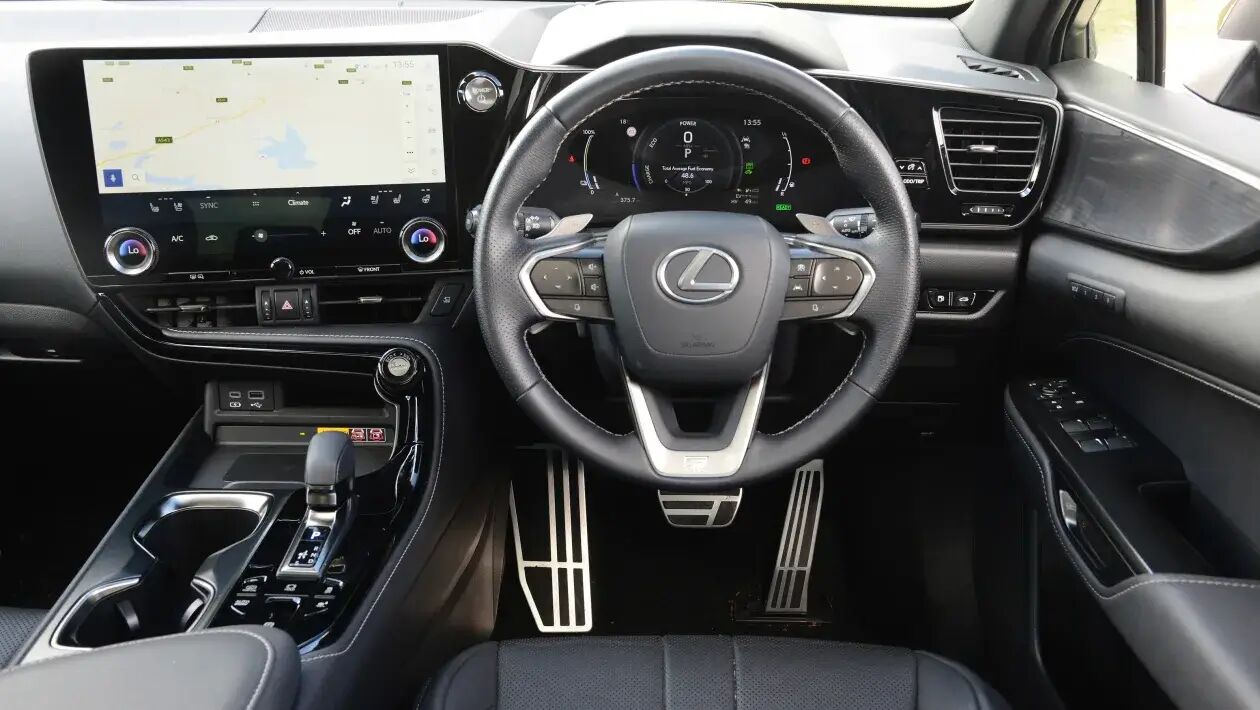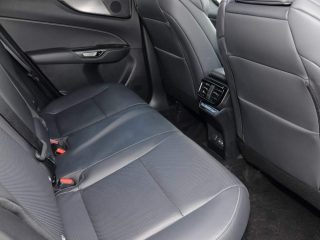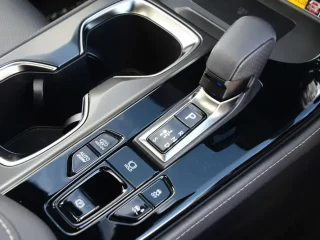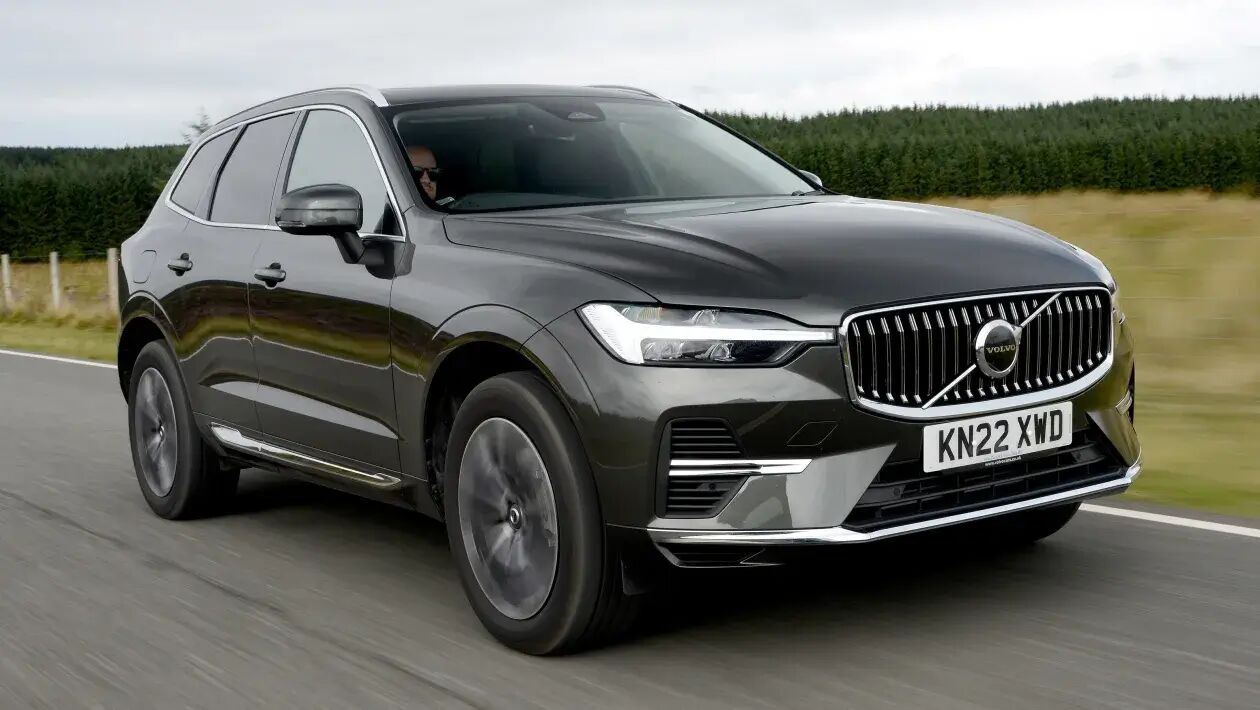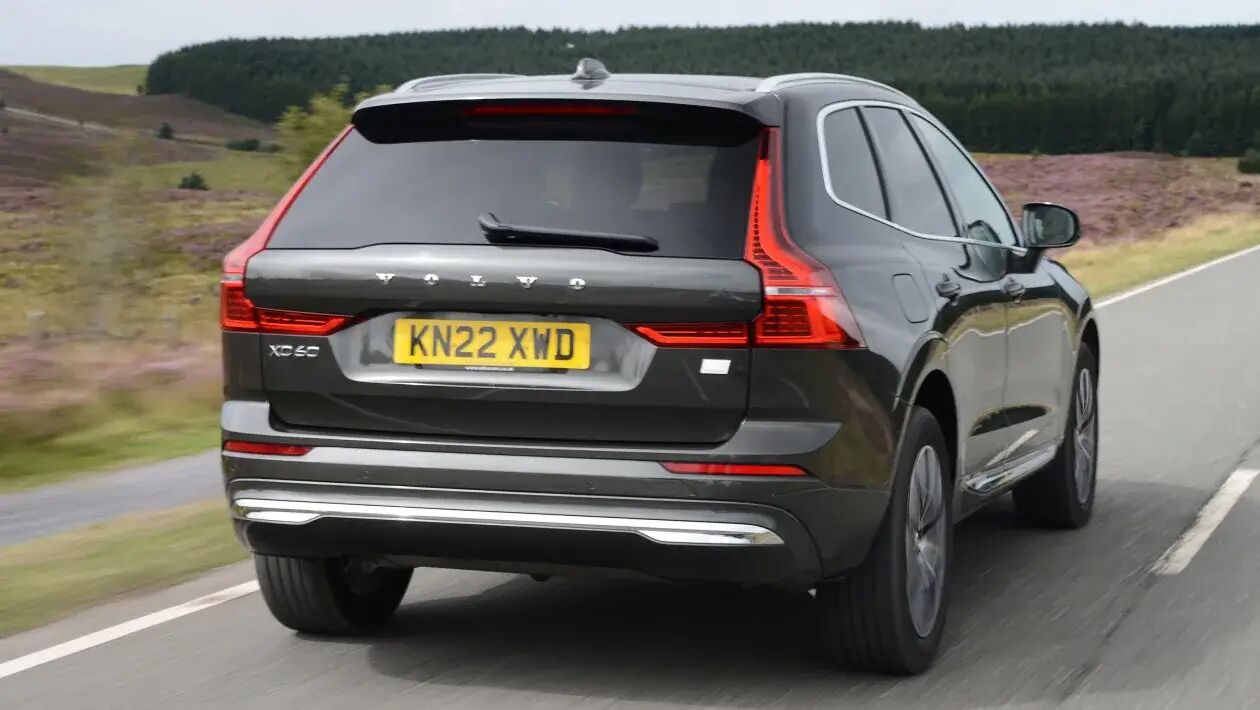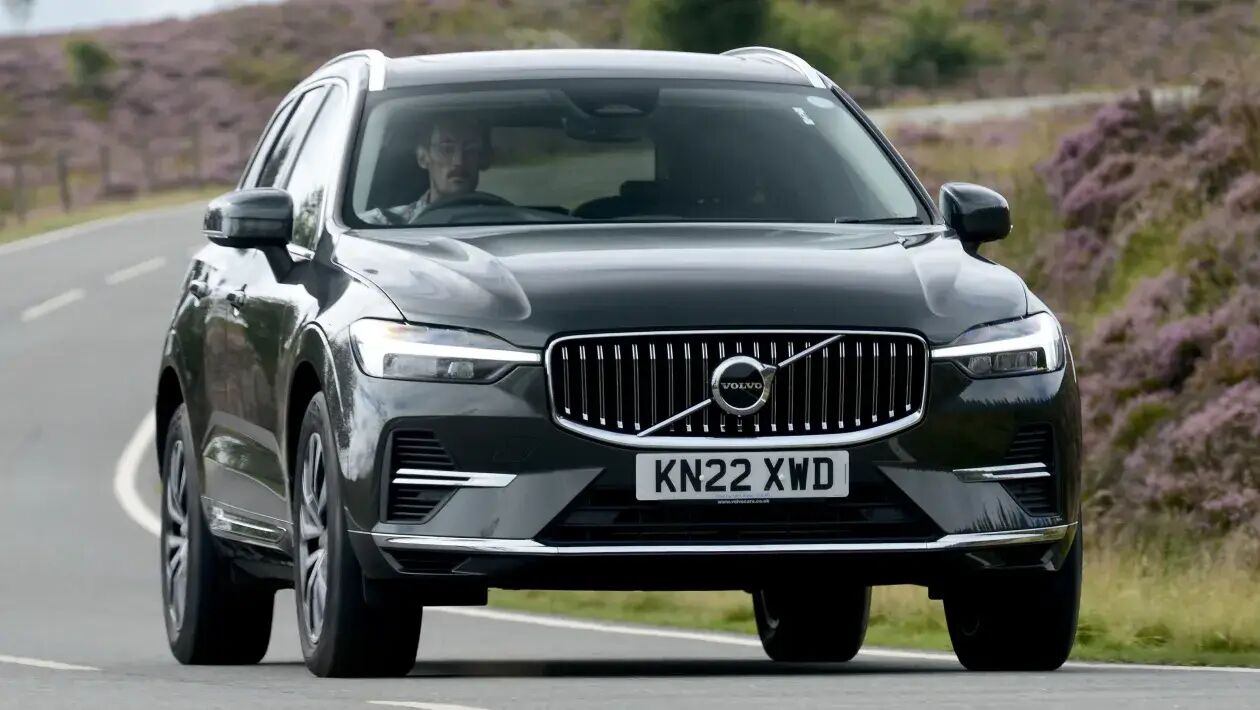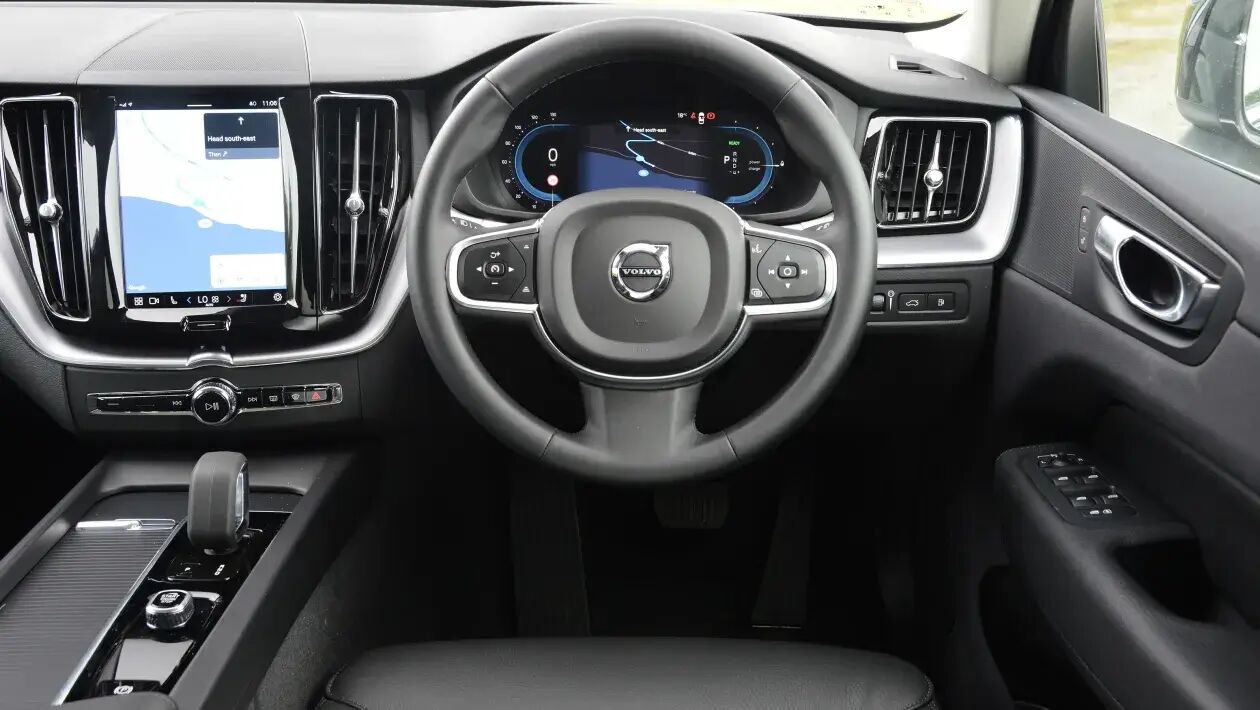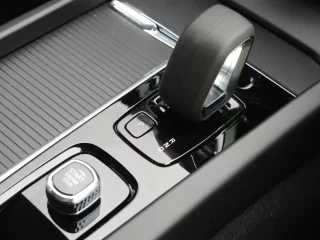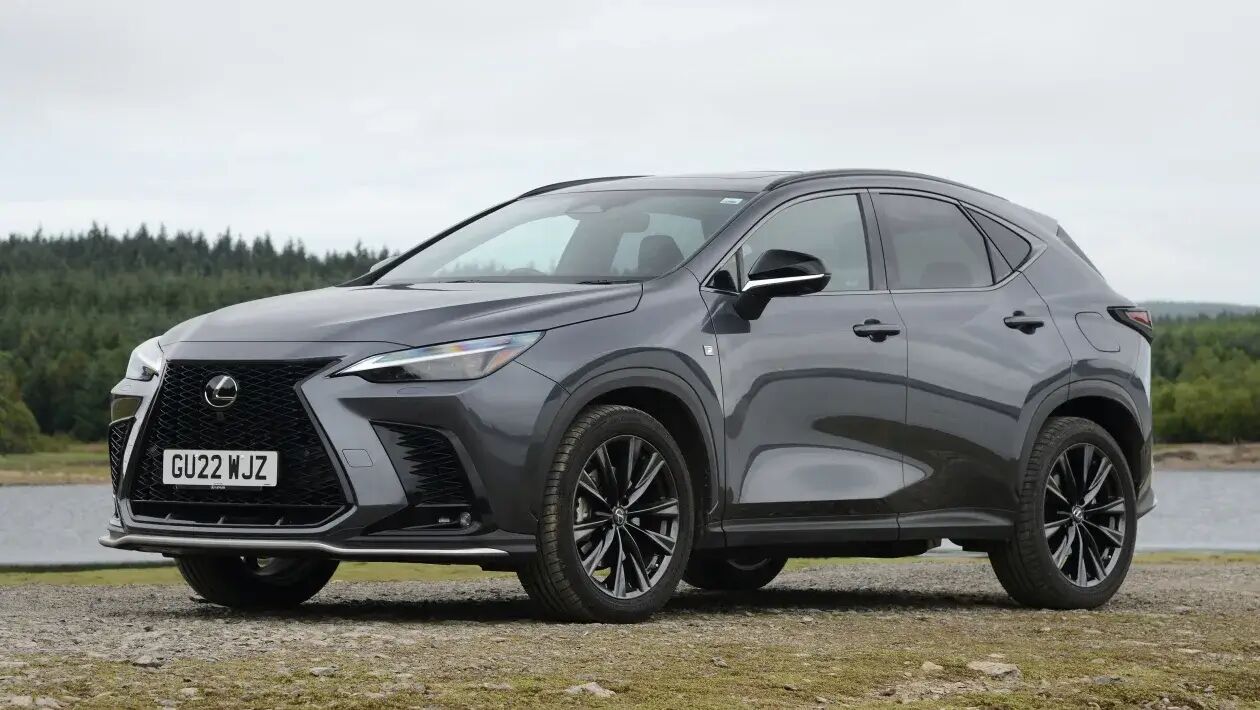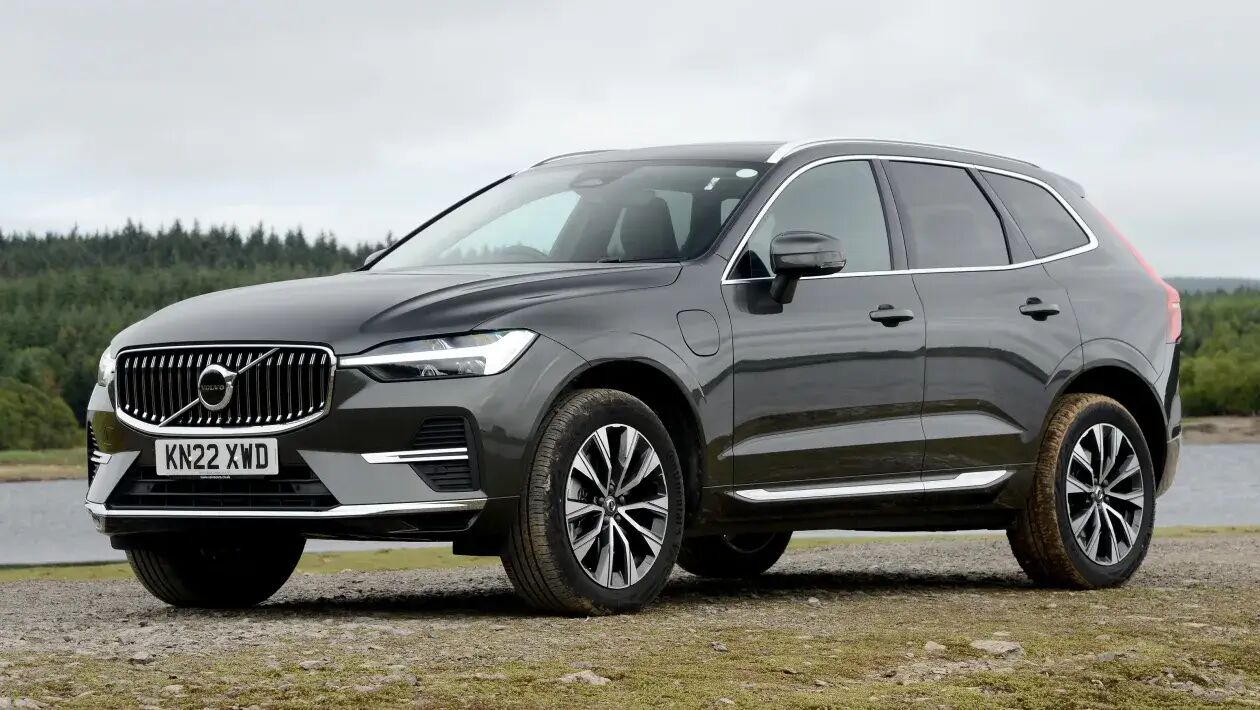The new Mazda CX-60 PHEV is designed to appeal to premium SUV buyers, so we test it against the Lexus NX and Volvo XC60 to see how it fares.
It’s no easy task for a new car to make an impact in the hotly contested premium SUV class, and it’s harder still for a brand that has no previous experience in the sector.
But that’s exactly what Mazda is doing with the new CX-60. Mazda has always done its own thing in terms of design and tech, but here it’s trying to force its way into an established class that’s beyond its usual remit of small SUVs and affordable sports cars. It also comes with Mazda’s first plug-in hybrid powertrain, but has it bitten off more than it can chew?
To find out, we’ve lined up two very strong rivals against the Mazda CX-60 – albeit this test is done in the UK given the CX-60 won’t launch in Australia until early 2023.
Swap two letters over, and the CX-60 becomes the XC60, and Volvo’s challenger has been a constant favourite of ours in this segment. There’s an updated plug-in hybrid system for the current model, too, which isn’t likely to do it any harm.
Then there’s the Lexus NX 450h+. We can’t think of many cars that have improved quite so dramatically when compared with a predecessor, taking the NX from an also-ran to one of the class leaders.
These, then, are two of the best rivals that the class has to offer. If the CX-60 can emerge with anything less than a bloody nose, it should be considered a success for Mazda.
Mazda CX-60 Road Test
Mazda’s fight to gain a foothold in the premium SUV class relies in part on competitive pricing which has not yet been confirmed for Australia. But indicatively in the UK, the Mazda CX-60 PHEV flagship Takumi (equivalent to Azami) grade model here is priced at £50,420 ($90,000) including its $1600 optional Soul Red paint. That’s at least $15,000 less than both rivals here – UK pricing in mind.
In Australia, the Lexus starts from $89,900 and the Volvo from $100,990 before on-road costs. We’d expect the Mazda CX-60 to certainly start under those prices locally, but we’ll have to wait a little longer to find out.
While Mazda is best known for sports cars and rotary engines, it does have form in the mid-size SUV sector with the CX-5, CX-8 and CX-9.
The new CX-60 is attacking the class full on, with a brand-new platform and new powertrains. At a later date, this will include an all-new 3.0-litre in-line-six engine. But for now, the sole powertrain option is one that many buyers will see as relevant given the push towards electrification.
Mazda’s plug-in hybrid system combines a 129kW electric motor, a 17.8kWh battery and a 2.5-litre petrol engine. Together they produce 241kW, an output that splits the other two here. While drive is sent to all four wheels, Mazda says that the CX-60’s layout is rear-biased, which is in contrast with its rivals.
Mazda doesn’t (yet) have the premium reputation that Lexus or Volvo has, but hide the badges in the cabin and you’d be hard-pressed to notice any difference in quality. The CX-60’s interior, especially in our car’s high-end Takumi spec, is a lovely place to be; the finish is fantastic, the materials feel solid, and the clever use of textures, including Japanese-inspired fabrics and veneers, means that it’s more than special enough for Mazda’s premium ambitions.
The fantastic 12-speaker Bose sound system, which also adds technology to make the cabin quieter on the move, backs up the impression of quality. The driving position has plenty of adjustment, but the seats feel a little firm when compared with the Volvo and Lexus, both of which provide fabulous comfort and support.
In almost any class in which it competes, Mazda delivers a chassis balance that achieves engaging handling without sacrificing comfort. Unfortunately, the CX-60 hasn’t quite managed to bring this Mazda magic to the premium SUV segment.
There are highlights – the steering is precise and well-weighted, for example – but elsewhere the CX-60 feels a little compromised. In corners, body roll is fairly pronounced and the chassis struggles to keep up with that responsive steering. It doesn’t feel any sharper than the Lexus, but also feels less stable than its rival through quick direction changes.
That initial softness to the suspension doesn’t translate into a cosseting ride, either. Of this trio, the Mazda feels the most fidgety.
The hybrid system is also a bit of a mixed bag, with a pronounced whine from the electric motor, even before it’s put under load. What makes this noise even more incongruous is that the engine is as well insulated from the cabin as those in its rivals here.
At 5.8 seconds, the CX-60’s 0-100km/h time is half a second faster than the NX’s, although once on the move, the Mazda’s transmission takes a little longer than its rival to figure things out, so overtakes aren’t quite as instantaneous. The shifts themselves are on the clunky side, too.
When it comes to overall carrying capacity, the Mazda is the most capable car here. A capacity of 570 litres is more than 100 litres ahead of the Volvo’s 468-litre boot, and beats the 525-litre Lexus, too.
Fold the seats down, a task made easy thanks to the release levers located in the boot, and the advantage continues; the CX-60 offers 1726 litres, compared with 1436 litres and 1395 litres in the Lexus and Volvo respectively. The seats don’t quite achieve a level load space when dropped, though.
The space is useful, too. There’s a generous under-floor area, which has enough room for storing charging cables, while there’s a three-pin plug socket in the boot area, plus another in the cabin.
Rear-seat passengers are fairly well catered for, if not quite as generously as in its rivals here. There’s 20-30mm less kneeroom than in either the Volvo or Lexus, while headroom is a match for the former, but slightly behind the latter. There’s loads of foot space beneath the front seats, but a middle rear passenger has to put up with a high-set seat, so headroom is even tighter.
If you’re installing a child seat, the CX-60’s mix of a raised seating position, large rear doors and Isofix clips that are accessible behind neat plastic covers make the process fairly straightforward.
Lexus NX Road Test
Lexus, along with its parent brand Toyota, certainly has plenty of form when it comes to hybrid tech. During the 20-odd years since the Prius made its debut, the Japanese giant has redefined the formula, to the point now where it offers models such as this NX 405h+.
While PHEV hybrid tech is a more recent venture for the brand, the basic premise is very similar to its standard hybrids in principle; a petrol engine (in this case, a 2.5-litre unit) is linked to an e-CVT gearbox, which is boosted by electrical assistance. Unique in this trio, the NX has two electric motors, one on each axle. At 137kW, the front motor alone is more potent than in either of its rivals, but the Lexus adds a second 40kW unit at the back. That means when you’re in electric mode, for up to 69km thanks to the 18.1kWh battery, there’s more performance available.
Lexus has rarely dropped the ball with its cabin designs, and the NX is another hit. The quality is pretty much flawless and the design feels contemporary, thanks in part to the huge touchscreen. In-car tech is one area where Lexus has traditionally lagged well behind the competition, with awkward functionality and underwhelming graphics. But the latest set-up is one of the best in the class, eradicating one of the biggest weaknesses of this car’s predecessor.
The driving position is high, comfortable and has lots of adjustment, but over-the-shoulder visibility is the poorest of this trio. When it comes to parking, the Lexus compensates somewhat with a surround-view camera that can project images of the road underneath the car, so it’s easy to see how much space is around you in tight spots.
The Lexus offers the finest compromise between ride and handling here. It’s much sharper to drive than the Volvo and is barely any less compliant over bumps. There’s less fidget with the NX than in the Mazda, and the Lexus also has a more composed feel through corners than its Japanese rival.
The hybrid system is the most convincing of this trio, too. The throttle response is the most instantaneous and the power delivery the smoothest, both in general and when the system transitions between full-EV and combustion modes.
The high electrical output helps here, because it means that the petrol engine doesn’t need to turn on as often as in either of its rivals. That also helps to mask one of the small weaknesses of the powertrain, which is the monotone drone that comes from the CVT gearbox under hard acceleration. This is a common feature of all Lexus and Toyota hybrids, but there’s so much power here that the need for full-throttle acceleration – and therefore the unpleasant noise – is rare. Plus, it’s well insulated, so the engine noise is more muffled here than in either the CX-60 or XC60. Wind noise is slightly louder than it is in the Mazda, but that’s one of very few criticisms we can make about the NX’s refinement.
If you want to change the car’s behaviour – for example, wanting to hold some electric charge for a later point in a journey, or to improve throttle response by switching to Sport mode – it’s easiest in the Lexus. A couple of buttons down beside the small gear control the former, while a rotating dial on the dash covers the latter. The same settings in the Volvo are buried in confusing infotainment sub-menus.
While the Lexus might not be able to match the Mazda for boot capacity, it’s the winner here for passenger space. Head and kneeroom are the best on test (although it only just pips the Volvo for the latter), while it’s also the most comfortable when three people sit on the back bench, because the centre seat is both wider and lower than the equivalent spot in the CX-60.
That 525-litre boot may be smaller, but it still has its useful touches. There’s a 12-volt socket for powering devices, while a netted partition and a couple of bag hooks help to secure smaller items when the boot isn’t filled to the brim. The opening is wide and square, and the load lip is almost level.
Interior storage up front is good enough. We like the twin-hinged centre bin, which makes it easy for either front occupant to access; this sits behind two cup-holders and a large wireless phone charging pad.
Volvo XC60 Road Test
With its release dating back to 2017, the second-generation XC60 is the oldest car in this contest. It launched with petrol and diesel powertrains, plus a single PHEV model. Since it first came out, the Swedish brand has introduced incremental improvements both to the powertrains and the infotainment technology, to align with fully electrifying its entire range.
The key upgrade for 2022 is a new, larger battery pack for the plug-in hybrids. Size has increased from 11.6kWh on our last encounter to 18.8kWh now, although only 14.9kWh of that is a usable capacity. As a result, electric-only range now stands at 76km for the T8 Recharge.
The XC60 Recharge comes in T6 and T8 specification – the latter offered in Australia and getting a more powerful engine than the one we could use here. On test, this T6 uses a 2.0-litre turbo engine and electric motor to produce 257kW. Locally, the XC60 Recharge produces a much meatier 340kW from a twin-charged 2.0-litre PHEV driveline.
The cabin design might have lost the initial wow factor of five years ago, but it remains a luxurious, relaxing place to sit. Build quality is great – we particularly like the sturdy feel of the door handles and the steering-column stalks, the driving position has loads of adjustment, and the seats themselves are very comfortable. A panoramic sunroof makes the Volvo’s cabin feel lighter than the Lexus’s.
Buyers tend not to buy Volvos expecting an engaging chassis, and the XC60’s comfortable, relaxed gait very much plays to that stereotype. The ride is the softest of the three models here; over larger bumps and compressions, you can feel the suspension squash down gently before bouncing back through its travel. While this makes the Swedish SUV very relaxing at higher speeds, it does mean that on a country road, the Volvo tends to take longer to regain its composure after hitting a bump.
The steering is very light and devoid of feel. It’s also quite slow – especially compared with the Mazda’s set-up – but this means that it feels better matched to the chassis. This, combined with fairly pronounced body roll, puts you off driving the XC60 enthusiastically. Instead, you make the most of the comfort and take it easy.
This is, however, slightly at odds with the Volvo’s performance. On paper, it’s the fastest car here; its 5.7-second 0-100km/h time pips the Mazda by 0.1 seconds. There’s very little between the Volvo and the Mazda on the road, though, with both cars offering strong acceleration – once the petrol engine and laggy gearbox have woken up, at least. The local T8 is a fair bit quicker given it will accelerate 0-100km/h in 4.9 seconds.
Hop into the back of the XC60, and it’s a bit of a mixed bag. Kneeroom is great – almost the same as the Lexus’s – but headroom is a little compromised.
While the roofline is of a similar height to the Mazda’s overall, the roof curves in more at its edges; this, combined with the space needed for the panoramic sunroof, means that those in the outer seats might brush their heads against the roof. At the point beneath the glass roof itself, there’s loads of space, but that would mean the occupants might need to tilt their heads inward slightly.
The centre seat is the narrowest here and the backrest is firm, but it’s also quite sculpted at its sides. As long as the middle passenger is slim, then they will be quite nicely held in place. The central hump in the floor is wide but very low, although it is covered in hard plastic instead of carpet.
There are other areas that are less great, though. Not only is the boot the smallest, but it also has hardly any underfloor storage, so you need to leave the charging cables in the main section of the boot. Isofix child-seat brackets are easy to reach behind folding plastic clips; the same applies to the Lexus.
Volvo has maintained a reputation for industry-leading safety for decades, and deservedly so. It’s absolutely no surprise, then, that the XC60 achieved a maximum five-star rating when it was assessed by Euro NCAP back in 2018. Indeed, the 97-per-cent rating in the adult occupant protection category was the highest rating of any car tested that year.
The NX was evaluated this year, which due to Euro NCAP’s ever-increasing standards, means it was tested to more stringent standards than the XC60. The Lexus also achieved a five-star rating, while the CX-60 has yet to be assessed by NCAP.
Verdict: How does the Mazda CX-60 compare with premium rivals?
First place: Lexus NX
The NX’s ability to see off two more very capable rivals only cements its place at the top of this class. Fantastic in-car tech and cabin quality are backed up by the best driving experience here, whether you rate it on the smoothness and responsiveness of its powertrain or its balance between ride and handling. While rivals might just edge it in one or two minor areas, it’s a very difficult car to fault, and is a worthy winner.
Second place: Mazda CX-60
To come second in this company is a very impressive achievement for Mazda. The CX-60 isn’t without its flaws – the hybrid powertrain needs work, and perhaps disappointingly for a Mazda, it isn’t that great to drive – but it fights back with a gorgeous interior and a huge boot. Throw in all of that, and badge aside, and it’s worthy of second in this test – although bear in mind that the Australian XC60 get’s some extra oomph and equipment than what it went against here.
Third place: Volvo XC60
The XC60 may take third spot, but there’s still much to like. Its comfortable ride, lovely seats and uncluttered cabin instantly leave you feeling at ease, while the updated PHEV system lets you enjoy EV-like silence for longer than ever, too. However, this isn’t enough to make up for a comparatively small boot and some dated in-car technology by comaprison.







